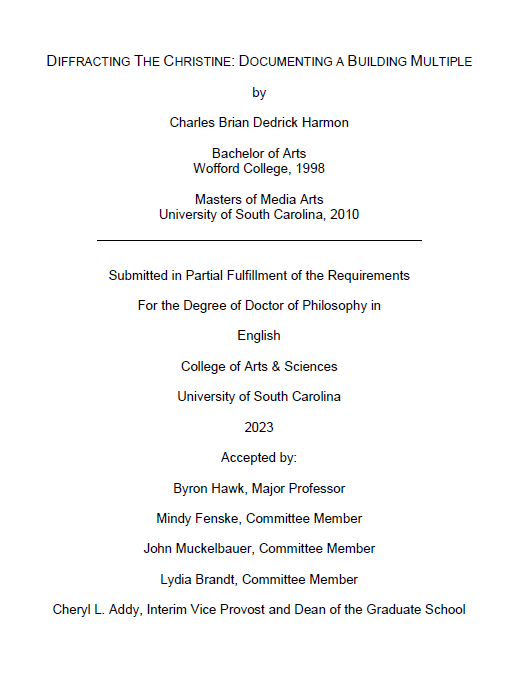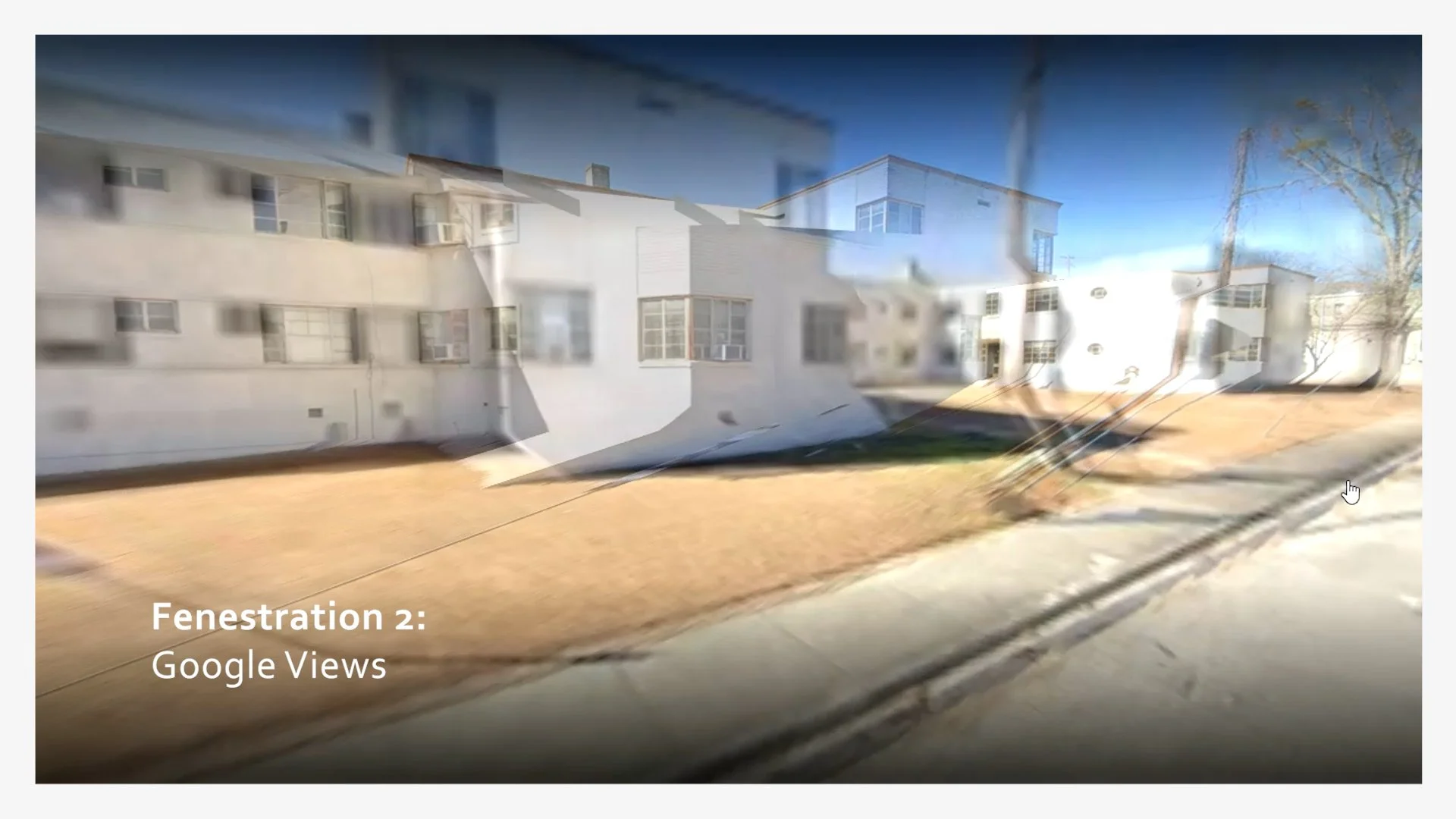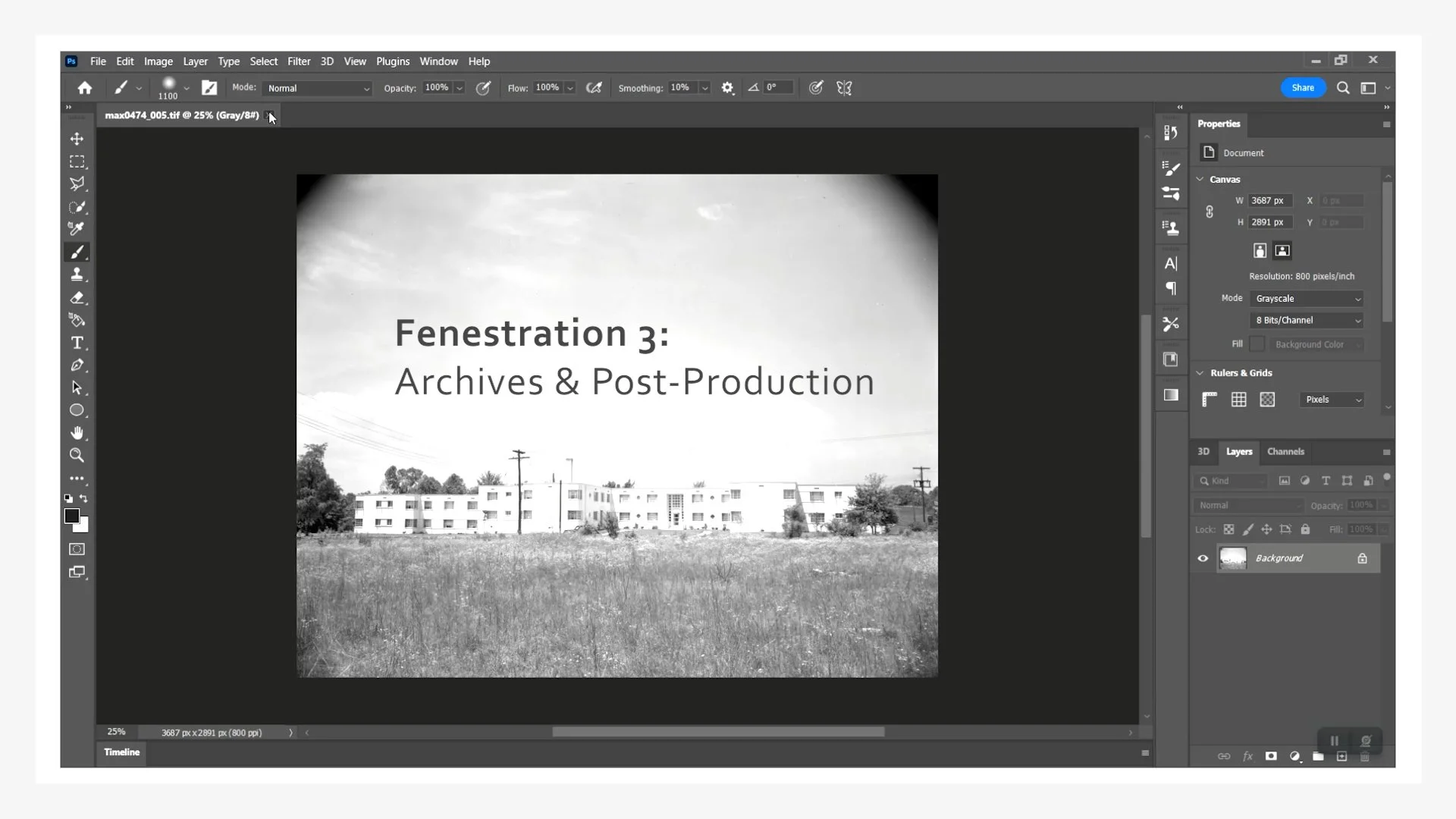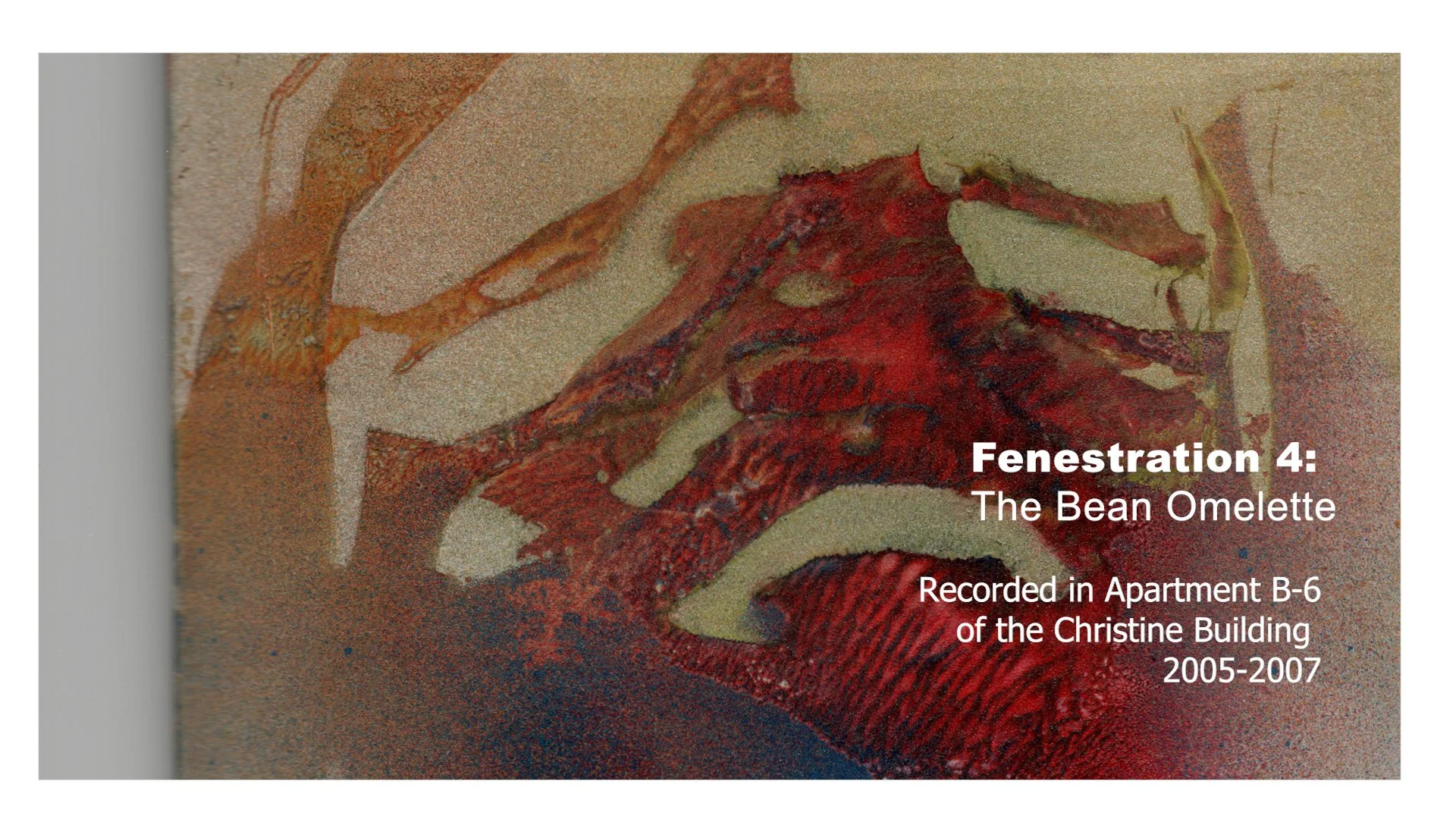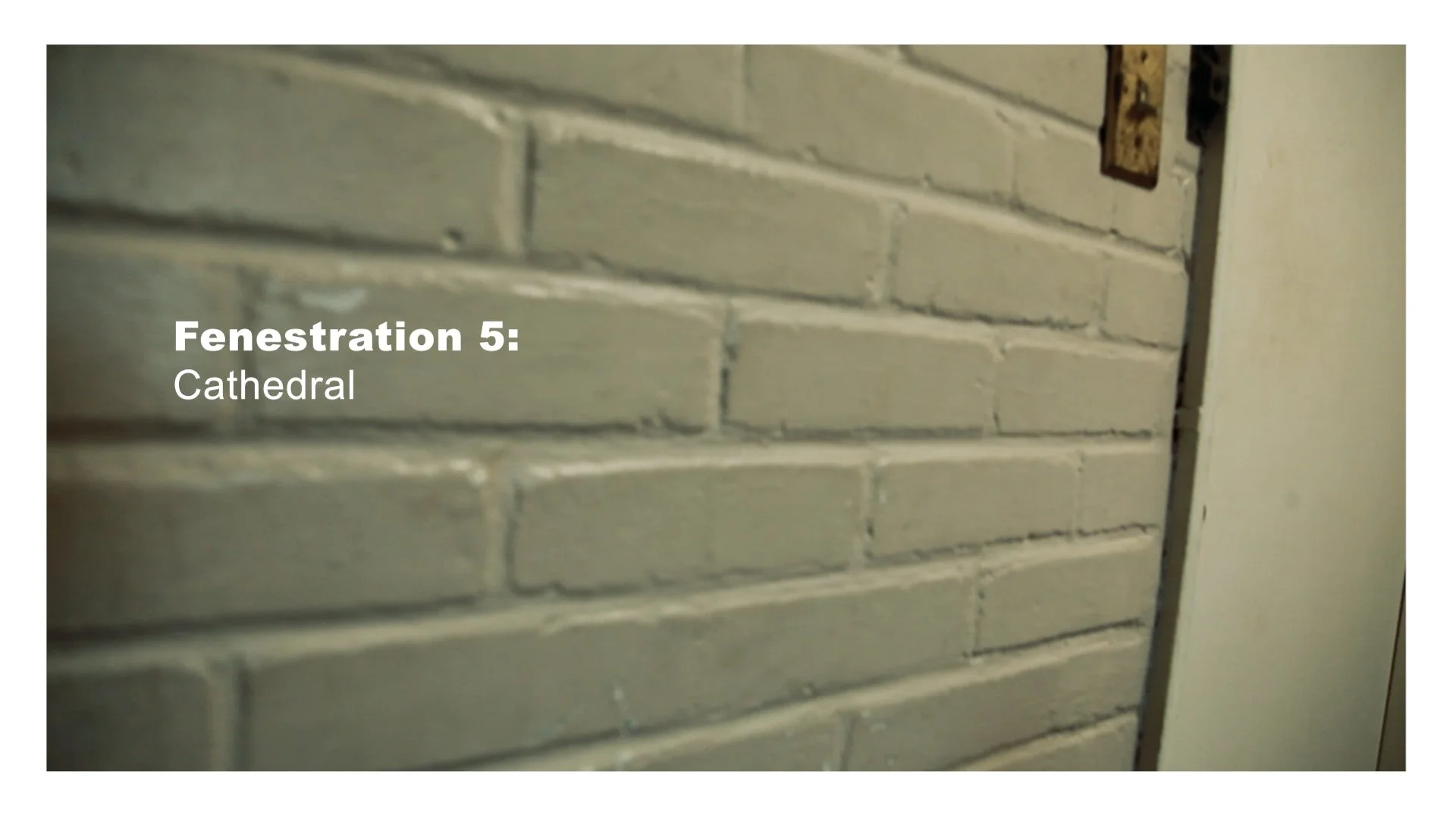
DIFFRACTING THE CHRISTINE
Documenting a Building Multiple
Save the Christine
An Expository Documentary
To begin, I pick up the pieces of media that I intended to use under the guise of Historic Columbia to create a traditional short video that falls under Bill Nichols’ schema as an expository documentary. It features a non-obtrusive soundtrack and an omniscient (voice of god) narrator that tells the basic story of the history and architectural significance of the Christine building and makes a specific argument that it should be preserved. It includes an extended interview with John Sherrer (Director of Cultural Resources at Historic Columbia) as well as traditional architectural images to illustrate the content of the interview and narration. The resulting film—structurally, thematically, and aesthetically informed by the tradition of the Historic American Building Survey (HABS)—avoids personal accounts or reflective/subjective experience or interpretation and is invested in the politesse familiar to the preservation world. The exegesis of “Save the Christine” dives into the history of this form before outlining genre conventions and offering a description of a toolbox of production suggestions to explain how this kind of film can be achieved by a nonprofit organization on a budget or by rhetoricians using documentary as a field method to better study the kind of fractional coherence of John Law.
In the Matter of the Christine
A Poetic Documentary
The second form of digital engagement that emerges from the collection of media gathered in 2016 loosely follows what Nichols described as the poetic mode of documentary. Informed by architectural phenomenology and the history of architectural photography, this short non-linear film deploys still and moving images with music and non-diegetic sound collected in and around the Christine in an attempt to visually convey the affective dimensions of the building through my subjective experience with it. The written component explores the influence of Jorge Otero-Pailos whose unique hybrid of theory and practice is invested both in creative preservation and the history of architectural phenomenology. I look to these traditions in the affects of architecture and space to gain phenomenological insight into what makes a building shimmer. Further, the genre conventions of the form are discussed including connections between assembly and new materialism.
@a_building_multiple
Mobilizing the Christine
The third type of digital engagement that I develop falls under the poetic documentary described above but is delivered via social media—a venue never imagined by Bill Nichols. Rather than the more recognizable 10-15 minute short documentary film that might be delivered in a film festival, this version will explore a vernacular, social media based video form. Produced to be shared on social media, each of the videos is under one minute in length, contains no music or voice-over, and will be accompanied by a brief text that frames and contextualizes the visual (such that would be included in the ‘comment’ section of a typical social media post). The form of these short pieces will be influenced by filming and editing techniques such as the ‘Ken Burns Effect’ and Laura Kissel’s ideas on the affective potential of the long take. The written component reviews the history, form, and theories of micro and short-form documentaries. It then puts this history in conversation with the architectural genre style discussed in Chapter 2 and trends in social media with specific emphasis on the work of Lev Manovich with Instagram.
Being with Xtine
A Performance Documentary
The fourth form that I enact using the 2016 footage will be a mélange of Nichols’ performative, participatory, and reflexive modes. It is also influenced by traditions of performance writing by scholars such as Gretchen Stein Rhodes, Phaedra Pezzullo, and Della Pollack. This is the chance to dive into my personal experiences with ethnographic fieldwork in and around the Christine and its residents. It includes interviews with residents and former residents mixed with artistic renderings of the building, music from the residents, and a voice-over narration that explores what it felt like to be in this crumbling, moldy old building in the final days of people inhabiting it in 2016. Over six sections, termed ‘fenestrations’ as a nod to the architectural subject matter, this film illuminates the production process and methodology that provides the foundation for this method. The written component includes autoethnographic elements that give a comprehensive verbal description of my interaction with the Christine building and makes specific reference to other work in performance and sensual ethnography.


